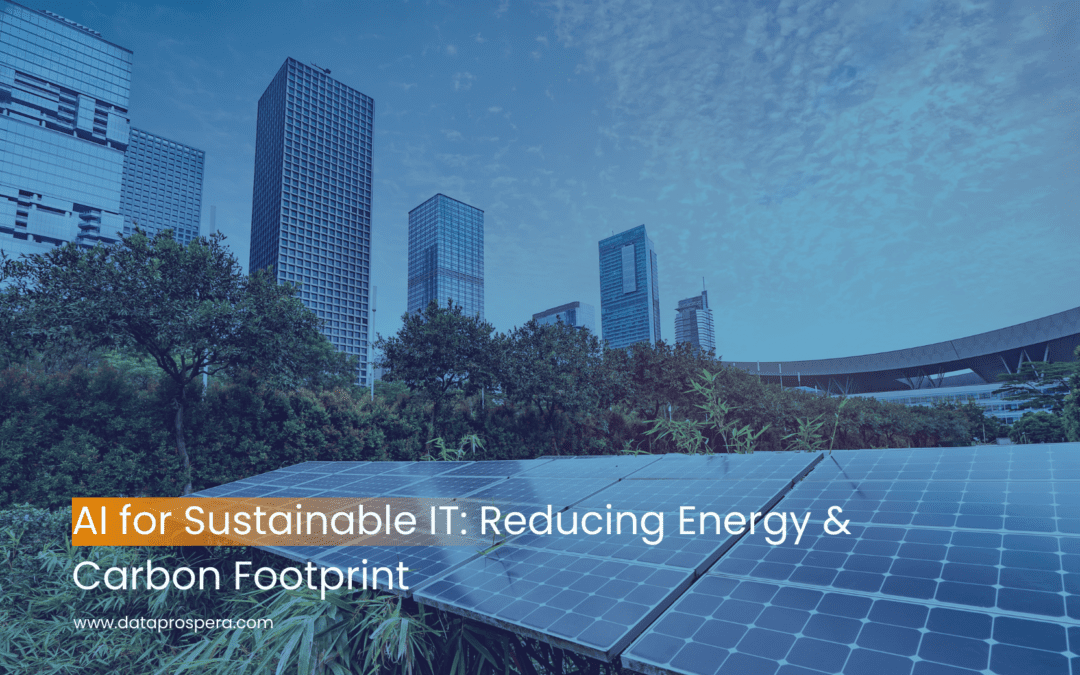As businesses increasingly rely on IT infrastructure, the environmental impact of data centers and computing resources has become a growing concern. AI-driven solutions are now playing a crucial role in optimizing energy consumption and reducing carbon footprints, helping organizations achieve sustainability goals while maintaining efficiency.
The Environmental Impact of IT Operations
Data centers worldwide consume massive amounts of energy, contributing significantly to carbon emissions. According to The International Energy Agency (IEA), data centers and data transmission networks accounted for nearly 1% of global energy-related greenhouse gas emissions in 2022. With rising digital demand, organizations must adopt smarter, energy-efficient solutions to mitigate their environmental impact.
How AI Optimizes Energy Consumption in IT
AI can enhance energy efficiency in IT operations in several ways:
1. Intelligent Cooling Systems
AI-powered cooling solutions analyze real-time temperature and workload data to optimize cooling efficiency in data centers. For example, companies like Google have used DeepMind’s AI to reduce cooling energy consumption by 40% in their data centers.
2. Dynamic Workload Management
AI algorithms can distribute workloads more efficiently across servers, minimizing energy waste. By predicting demand patterns, AI ensures that underutilized servers are powered down or put in low-energy states without affecting performance.
3. Predictive Maintenance
Using AI-driven predictive analytics, organizations can detect potential hardware failures before they occur. This proactive approach minimizes downtime, reduces unnecessary hardware replacements, and optimizes energy efficiency.
AI’s Role in Reducing Carbon Footprint
Beyond energy efficiency, AI can actively reduce IT-related carbon emissions:
- Carbon-aware computing: AI can schedule non-urgent computing tasks during times when renewable energy sources (such as wind and solar) are abundant, reducing dependency on fossil fuels.
- Supply chain optimization: AI-driven analytics help companies make environmentally conscious choices in procurement, reducing emissions from IT manufacturing and logistics.
- Smart Grid Integration: AI can optimize power distribution and usage in IT facilities, ensuring that renewable energy sources are used more effectively.
Real-World Implementation
Companies like Microsoft and Amazon are already integrating AI for sustainable cloud computing. Microsoft’s AI-powered sustainability initiatives aim to achieve carbon negativity by 2030, while Amazon Web Services (AWS) is working on carbon-neutral data centers powered by AI-managed energy systems.
Implementing AI for a Greener IT Strategy
Organizations looking to reduce their carbon footprint can take the following steps:
- Adopt AI-driven energy monitoring tools to track real-time consumption.
- Invest in AI-powered automation to improve operational efficiency.
- Use AI-enhanced forecasting models to optimize energy usage and reduce waste.
- Leverage AI in renewable energy adoption to ensure seamless integration into IT operations.
Conclusion
Harnessing AI for sustainable IT is no longer an option—it’s a necessity. By optimizing energy consumption and reducing carbon footprints, AI can drive meaningful change in IT operations, helping businesses align with global sustainability initiatives while maintaining efficiency.
For more insights on AI’s impact on IT and business operations, visit Data Prospera’s blog and explore our latest articles on AI-driven efficiency and sustainability.


Recent Comments